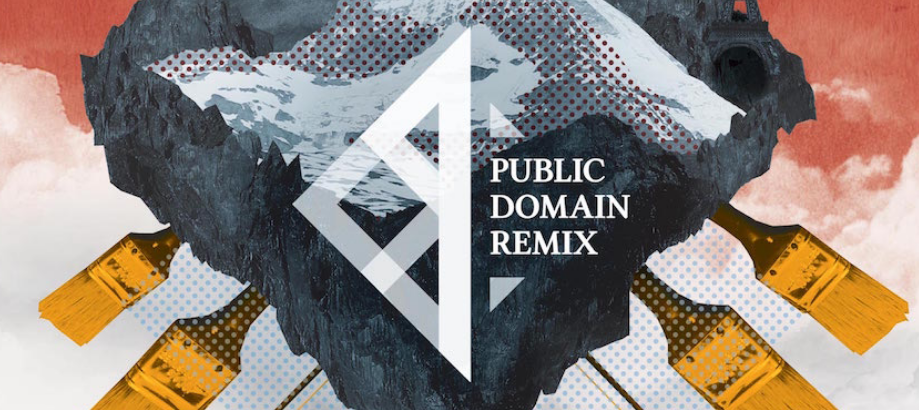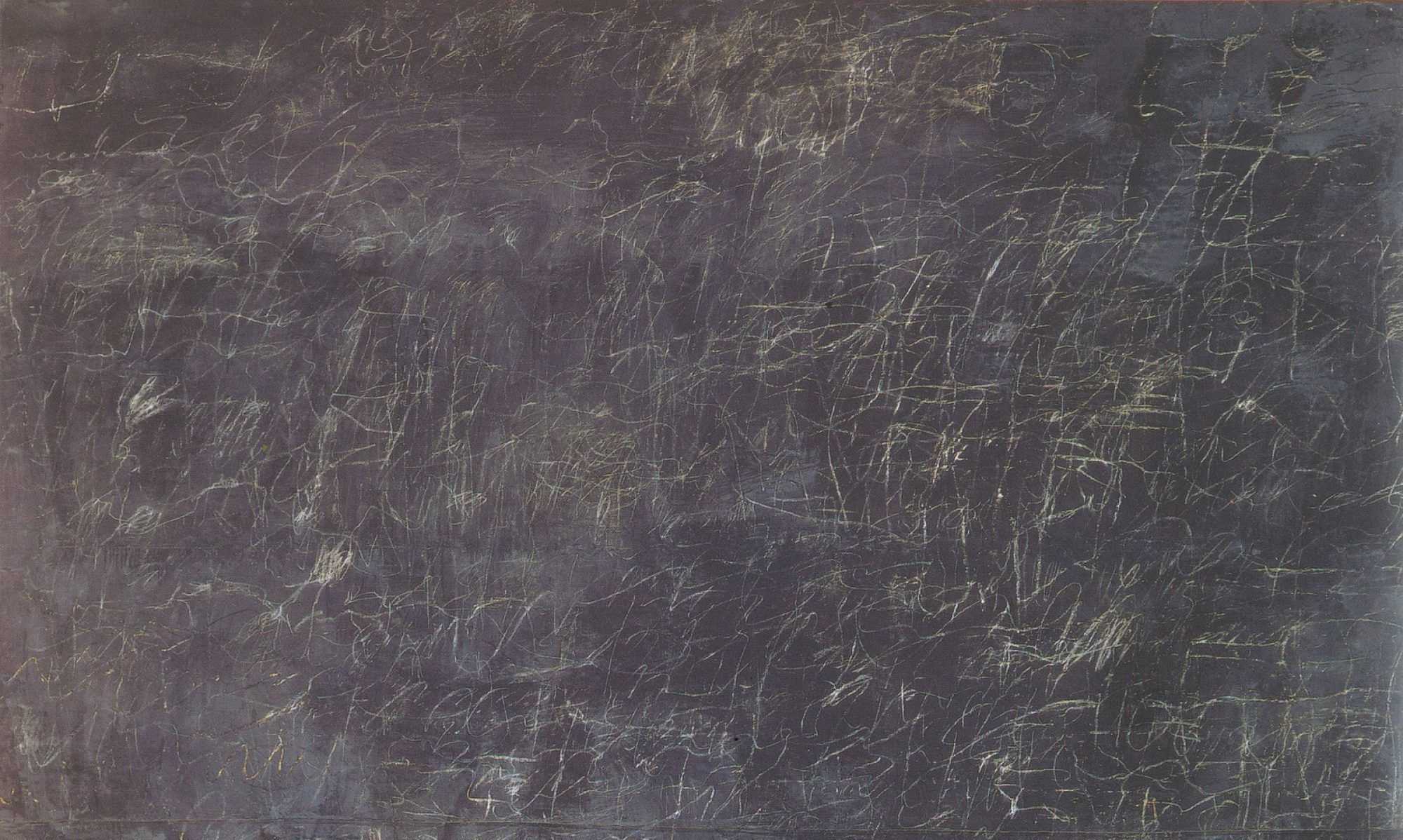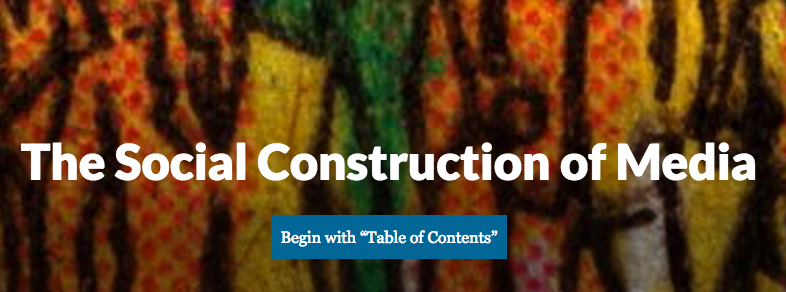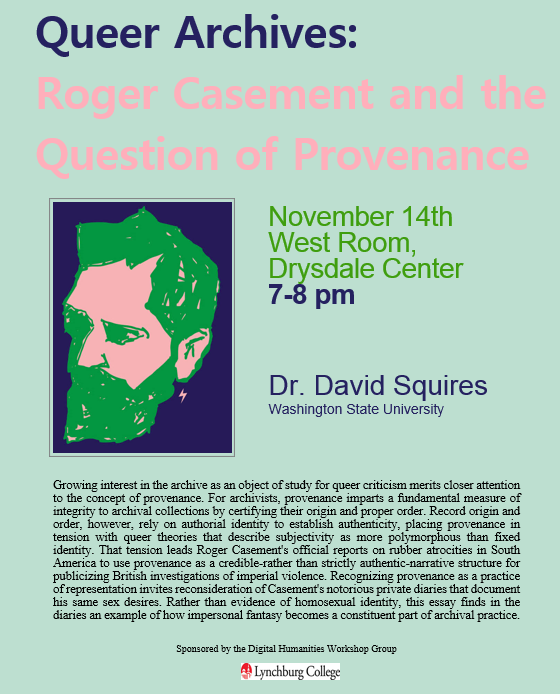Much of the early tension driving debates about digital humanities—internally and externally—organized around two related questions. What is it? And who can claim it as their field? Recently, those questions that once inspired urgent wrangling have grown slack, so much so that many of the most prominent practitioners of digital humanities “explicitly don’t find the term ‘digital humanities’ useful.” That, anyway, is how Ted Underwood put it in a recent interview with Melissa Dinsman. A quick review of the series of interviews that Dinsman has contributed to the L.A. Review of Books reveals that others agree. Nearly everyone Dinsman has interviewed for her path-charting series says that the term “digital humanities” means nothing at all (Franco Moretti), nothing very interesting (Bethany Nowviskie), or nothing more than an institutional configuration (Marisa Parham and, in a different way, David Golumbia). Indeed, one of the leading voices to emerge from the theoretical work of field definition, Matthew Kirschenbaum, came to the conclusion no later than 2012 that DH is “a term of tactical convenience.” In other words, it’s an institutional rather than intellectual configuration, and one that commands some influence.
Unsatisfying as those answers may be, one can sympathize with the desire to throw out the murky bathwater of field formation and get on with the work, even if that work implies a need to reconfigure our terms of disciplinary belonging. Given the construct’s institutional sway, however, no one should wonder at the baby left behind in the form of digital humanities for undergraduate instruction. While theory and method move toward new terrain, pedagogy seems to be sweeping up the tatters of frustrated debate. Last year Miriam Posner wrote about rehabbing her DH101 course into a 10-week tour de force of data management, project design, and cultural exposition. Next year at the upcoming MLA convention we can look forward to revisiting the introductory digital humanities course. And folks who want hands-on guidance in DH course design can attend, as I did this past summer, one of DHSI’s perennial seminars to “survey existing humanities courses that incorporate a significant digital humanities component in their design.” The implication is that, despite being intellectually vacuous, the term DH captures administrative attention and, with some work, may reinvigorate instruction in traditional humanities courses that have otherwise lost appeal in a world focused on STEM.
Any professor of conscience must wonder if it’s really worth teaching DH101 courses if DH is merely convenient. I want to offer a brief, provisional justification that does not take for granted an affirmative conclusion. In fact, I have doubts about the value of teaching introductory courses on the digital humanities per se. Many of my own sneaking suspicions find cogent expression in Ryan Cordell’s essay “How Not to Teach the Digital Humanities.” I am especially sympathetic to his critique of teaching DH itself as a subject for undergraduates. Given how uninteresting those questions of definition are to the leading professionals associated with DH, the problem of relevance seems particularly acute in a freshman-level class. A quick look at the helpful inventory of introductory DH courses that Kirstyn Leurner shared earlier this year shows how necessary Cordell’s intervention is in 2016. There we learn “Digital Humanities has become a hotbed of debate” among academics and we find course objectives “to develop familiarity with the principles, motivations, and methods that drive the creation of digital humanities scholarship.” These course descriptions come from the best teachers and scholars in the country. They’re not bad. But they do seem oddly concerned with introducing students to problems in the profession.
Cordell proposes to move away from DH as an organizing theme for courses. For instance, he reports greater success with “Texts, Maps, Networks” than he had with “Doing Digital Humanities.” He hopes the digital can enter curricula “as a naturalized part of what literary scholars or historians or other humanists do.” For better or worse, we can see that the digital is becoming a naturalized part of what we do. So why bother to adopt DH as a category of undergraduate courses? Cordell answers, essentially, that we should not. And if he’s right that “for our undergraduate students the word ‘digital’ is profoundly unimpressive,” then we may not have even a strategic reason to use the term. Yet humanities programs across the country are implementing DH curricula. It’s not for nothing. These classes have some curb appeal—among administrators and students—for appearing engaged with current methods of inquiry and for promising to teach technical skills in addition to analytic skills.
I have only my own experience to judge by, but I see students intrigued—admittedly not impressed—by the word “digital” for many of the same reasons academics, cultural critics, journalists, and technologists find it worthy of investigation: the digital has touched all of contemporary life from reading to dating to waging war. My sense is that most students drawn to courses titled “digital humanities” have an interest in understanding how digital technologies impact human culture. Certainly my students are more interested in that than they are in the humanities, much less the impact digital technologies have had on humanities scholarship. That fact has not prevented me from using DH as an opportunity to discuss the humanities with students. However, it has convinced me that most of my students have a critical interest—as opposed to a technical, native, or consumerist interest—in making digital technology and culture the object of study.
This may seem like an obvious point because much of the leading scholarship in DH treats digital technology as an object of study. Take Kirschenbaum’s latest book Track Changes. It has been the most talked about book in DH this year. Probably it has been one of the most talked about books in literature studies. The roundup of articles about the book at the bottom of its press page attests to its general appeal beyond specialists in English departments. Reviews in The New York Times, Guardian, Atlantic, Boston Globe make clear that there’s a broad fascination with the literary history of word processing. Compare that to DH curricula, however, and we begin to see a divide between using digital technologies to study, say, Victorian novels and the digital as a subject for historical or cultural studies. Both are important, I think, but digital methods can be a naturalized component of instruction only in the former. Studying digital technology and culture requires some intellectual resistance to that process of naturalization in order to demystify aspects of contemporary life that have become ubiquitous, such as word processing.
In many ways my point about teaching introductory-level courses on DH echoes something David Golumbia said in his LARB interview: “In some DH courses you have a very skills-based focus, like how to mark up a text. But when you talk to students about what the digital means, they have a broader understanding. They want to talk about games, online dating, trolling, racism, etc.” A cultural criticism that focuses on digital technologies and the social lives surrounding them can appeal to students who want to think more deeply about the world they’re supposed to inhabit. Part of that thinking must inevitably encounter what Golumbia calls in a different LARB title “neoliberal tools.” In that critique he and his co-authors describe an academic landscape favoring “work that produces findings immediately usable by industry and that produces graduates trained for the current requirements of the commercial workplace.” We can see that revaluation of work in the humanities when DH courses make project management a learning outcome rather than a means to an end. Privileging culture, by contrast, can make digital tools themselves objects of inquiry and critique.
I realized students arrive in my introductory DH classes with a desire to think critically about digital tools when I asked them to find images that represent digital culture. This exercise serves as an ice-breaker activity to discuss the value of combining digital technologies with humanistic inquiry. One student shared an image that struck a nerve with the class. From a series by Brazilian artist Felipe Luchi, the image creates a visual amalgam of an iPhone and a prison.

Many students in class recognized right away how a smartphone can act like a ball-and-chain. Others found the image so counter-intuitive that we spent some time looking at the formal concurrences just to get a sense of how the design works. A few students wondered if the image might have more to do with labor conditions for iPhone manufacturers than individuals tethered to their devices. The conversation brought the class closer to appreciating a remarkable design at the same time it introduced some consensus that new technologies might have negative consequences.
That simple in-class exercise proved useful for addressing digital tools as things to study, critique, and maybe even reject. Although thrilled by my students’ engagement and insights, the discussion left me wondering about the ethics of requiring various web applications for class assignments. Should students be required to subject themselves to Google surveillance to participate in my course? Is it fair to expect each of them to have a digital camera? Should I teach them to use those tools or just focus on the cultural questions? The critique Golumbia and his co-author’s put forward in “Neoliberal Tools” could be taken as a call for DH to move away from its software development project—maybe from tools-centered teaching altogether, especially if those tools come from the for-profit world of Silicone Valley. Of course, like any of us using the internet, most students subject themselves to online surveillance long before they arrive at college. And neoliberal or not, many of the students I teach need to learn Adobe software for professional reasons.
A week at DHSI last summer convinced me that students should use some digital tools. The motivation for me is not to develop “technical expertise as a form (indeed, the superior form) of humanist knowledge,” as Golumbia et. al. put it. Rather, in a class focused on cultural criticism, working with certain tools provides hands-on experience that can ground analysis in the particulars of cultural dynamics at stake in digital technologies. Exposing students to non-commercial software also puts the dominant norms of digital culture into sharp relief. For instance, I used Omeka in a recent course to raise a broad discussion of how cultural materials circulate online. Learning the archival standards of Dublin Core documentation gave students a counterpoint for thinking about viral media that circulates without attribution and even digital archives that appear online “as if they were shrink-wrapped,” to borrow from Antoinette Burton. “That is, with very little trace of how they were compiled, massaged, and otherwise packaged for mass consumption.” Understanding search and circulation in digital environments may make students better consumers, but those skills can also build toward a capacity for critically appraising information. In late capitalist society, those skill sets simply cannot be separated.
This semester my students used Scalar to write about and document social media as a cultural phenomenon. I picked Scalar in part because of how the platform necessitates some attention to where online sources come from, without requiring the sort of time-consuming documentation work of building Omeka collections. Also, because Scalar is open source software, the project offered the class an opportunity to discuss what open means for educational resources and the work of producing knowledge. In many ways, the internet breaks with historical standards of knowledge production by shifting to what Orit Halpern describes as a postwar paradigm of communication based on “the concept that more information is always better and that interactivity is equivalent to thought.” In Halpern’s account of postwar design we see how cybernetics and aesthetics joined forces to re-imagine knowledge in terms of networks and interfaces. Those experiments are suggestive of a normative internet culture that celebrates the ability to return millions of search results in half a second without worrying much about establishing credibility, ensuring reference stability, or documenting sources. Scalar works counter to those norms by bringing media in contact with analysis while making sources more transparent. As students began linking to Twitter and Facebook pages, they quickly realized that social media does not exist on the open web in the same way as other websites with stable URLs. The technical hiccup in pulling media from those platforms led to an interesting discussion about the function of social networks, with students recognizing the commercial incentive Facebook has to create barriers between its network and the web.
Using Omeka and Scalar in recent courses marks my first attempts to bring cultural criticism and DH tools together in the same courses. It’s a process that requires more reflection and more practical work. However, in the spirit of Posner’s rehabilitation of DH101 and the upcoming MLA panel on revisiting introductory DH courses, I am attempting to retool my introductory courses. Below are the assignment prompts and the projects students completed.
Free Culture (link here)

This assignment requires you to use public domain materials to make a remix. Public domain materials are those cultural products not protected by copyright, either because of their age or because creators waived all interest in them. A remix will take an existing cultural product and change it significantly to create a substantially new work. For this assignment, you will change multiple cultural products by mixing them together somehow. How and what will be up to you. The only restrictions are that you avoid copyright infringement and the final work must be multimodal.
I encourage you to use any tools at your disposal, including ones you do not have experience with yet. However, keep in mind that over the course of the next couple weeks you will need to demonstrate competence. This may not be the time to learn GIMP, Audacity, or After Effects if Pixlr, Garageband, or WeVideo will work instead. And there’s no shame in creating a collage, even if you want to scan it for digital editing and submission.
While the tools and media are yours to choose, this project requires creativity and experimentation. Not all experiments go as planned. Some even fail. That’s okay, so long as you make thoughtful choices along the way. To document those choices and to emphasis process, your remix will be accompanied by a curated gallery of the materials that inspired it. We will build the curated exhibits in Omeka as a class, but you will need to document your unique source materials along with your unique perspective on remixing culture. To that end, you will contribute a brief artist statement to your exhibit. The artist statement should explain your process from brainstorming to revision. The artist statement must also quote Lawrence Lessig to frame your project in terms of what he calls “free culture.”
Much as in the now infamous Talk to Me exhibit, the point of documenting your curatorial process will be two-fold. First, you will be communicating your unique research process and approach to engaging with creative materials. The Omeka exhibit should make your process legible to a public audience, that is, people who are not privy to our classwork but who have a general interest in digital art and questions of copyright. Second, the process of curating your source materials as you create a remix of them will help you achieve a level of intimacy with the originals that you might not otherwise achieve. That should help you understand—and articulate—how your recontextualization functions at the cultural level and why it is meaningful.
I encourage you to explore Archive.org, Free Music Archive, Critical Commons, and Creative Commons (see “projects”) to find remix materials. Also, check out NYPL’s “Remix Residency.” According to Utah librarian Rick Andersen, NYPL demonstrates the power of open access. Need more ideas for source material? Patents protect intellectual property by securing their holders an exclusive right to manufacture an invention. Patents themselves, however, automatically go into the public domain and make interesting documents for re-appropriation. Here’s a coloring book made from creative patents filed with the U.S. National Archives. The Public Domain Review also features collections of public domain materials, with the added benefit that most of them come along with some documentation.
Update
Unsure if something is in the public domain or not? Check these guidelines for determining the extent of copyright protections. Worth looking at just to get a sense of the byzantine rules that drive Lessig mad.
Open Access Textbook
Project 1 (link here)
Project 2 (link here)
Your second formal assignment will require you to work as a class to write a Scalar textbook about social media. Social media platforms such as Facebook, Snapchat, Yik Yak, and Twitter command an impressive amount of energetic attention from young and old alike. Yet many such platforms actively seek the attention of young early adopters who spot trends.
As college students, you make prime targets for social networks hoping to make a splash and, as such, are in a unique position to share your understanding of this online phenomenon with the world. Your personal experiences will be invaluable for this project. You will also conduct research to enrich your knowledge of the subject. Despite a wealth of scholarly writing on social media, there are as yet no standard textbooks on the topic from a cultural studies perspective. Your textbook will be an Open Access pilot project that will, if taken seriously, influence others after you.
We will use the web-based writing platform Scalar to compose this textbook. You will work in groups, but everyone will need their own account to join the project. Sign up as soon as possible. It is an elegant tool but requires some practice to learn to use. Each group will be responsible for a single chapter, while at least one person will take on the task of general project manager.
The first step will be to organize groups and assign roles. Each of you will need to contribute to the written product, but you might decide to take lead on research or editing or design—each one a significant role. Your group will decide on its own how best to organize efforts and the workflow. Be aware that dividing tasks will mean that your workloads will be interdependent even as they have different timelines. It is crucial that you fulfill your agreed upon duties—do not leave your group high and dry.
The class will brainstorm chapter topics as a whole. However, it will be the responsibility of individual groups to develop those topics. Course readings will help with that task and should be integrated where possible. Each chapter should be 1,500 words (about six pages in Word) and should feature visual media. You will need to include citations for your research materials as well as an organized list of titles for further reading. See Wikipedia articles for a model. Finally, each person is responsible for submitting a cover letter that explains their chapter’s place in the project and their role in the group. You will receive individual grades based on the quality of the book chapter (writing, research, and design) as well as the cover letter.
Check out Scalar examples: one about Archives and the Media, one about Sailing the British Empire.



